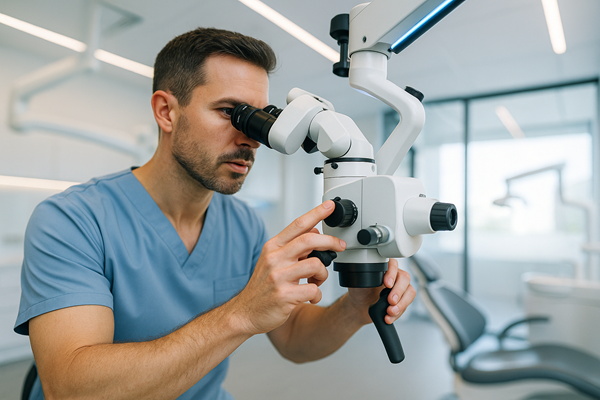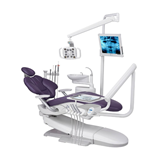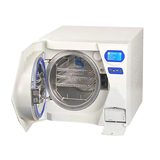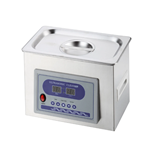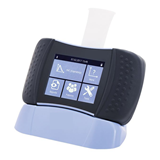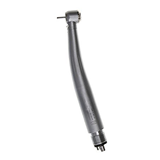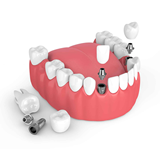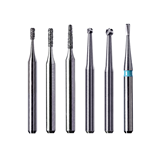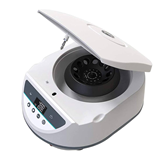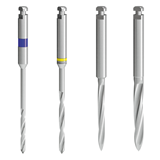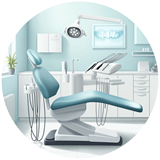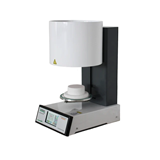Discover up-to-date dental microscope prices in Australia and expert buying tips. Learn about types, features, financing options, compliance, and maintenance to make the smartest purchase for your clinic.
Key takeaways
- Dental microscopes in Australia typically cost between $9,000 and $60,000, depending on features, magnification, optics, and brand.
- Entry-level models start from $9,000–$15,000, suitable for general practice or endodontic use.
- Mid-range systems with LED lighting, multiple magnification steps, and ergonomic mounts cost $18,000–$35,000.
- High-end microscopes with integrated camera systems, motorised zoom, and premium optics reach $45,000–$60,000+.
- Microscopes are TGA-listed medical devices and must meet relevant compliance standards under Australian law.
- Most buyers opt for finance, with chattel mortgages or low-doc loans making scopes accessible from $500–$900/month.
- Routine maintenance costs range from $300–$700/year, depending on usage and service intervals.
- When buying, prioritise optical clarity, LED lifespan, warranty length, and after-sales support.
- Dental microscopes improve treatment outcomes, especially in endodontics, periodontics, and micro-surgery, boosting visibility by up to 25× magnification.
Introduction: Precision is the new standard in dentistry
In Australia’s competitive dental landscape, patient expectations and clinical standards are evolving fast. High-precision treatment tools like dental operating microscopes (DOMs) are no longer confined to university clinics or specialist endodontists, they’re becoming essential tools for general dentists, periodontists, and implant specialists seeking accuracy, ergonomic workflows, and better long-term outcomes.
If you're considering investing in a dental microscope for your clinic, this comprehensive guide will walk you through every stage of the buying process, from pricing and types, to compliance, financing and FAQs, all tailored to the Australian market.
Types of dental microscopes available in Australia
Dental microscopes differ in features, use case, and level of precision. Here’s a breakdown of the most common types:
Entry-level microscopes
- Price range: $9,000–$15,000
- Use case: General dentistry, basic endodontics
- Features:
- Manual magnification (typically 3–5 steps)
- LED coaxial lighting
- Binocular head, fixed arm
- No video integration or recording
Mid-range microscopes
- Price range: $18,000–$35,000
- Use case: Endodontics, prosthodontics, surgery
- Features:
- Adjustable magnification (5–6 steps)
- Longer LED lifespan (~50,000 hours)
- Ergonomic mount (floor, ceiling, or wall)
- HD camera output for display or training
High-end microscopes
- Price range: $45,000–$60,000+
- Use case: Advanced microsurgery, implantology, referral practices
- Features:
- Motorised zoom and focus
- Integrated video or photo capture
- Apochromatic lens systems for highest clarity
- Touchscreen controls or foot pedals
Always check if the brand has local distributor support for servicing and warranty coverage.
What affects the price of a dental microscope?
Dental microscope prices in Australia can vary significantly depending on the specifications and level of technology included. Below are the main features that influence pricing and what you should consider when evaluating them:
- Optical system quality – One of the biggest drivers of cost. Microscopes with apochromatic lenses or premium glass coatings offer superior image clarity and colour accuracy but come at a higher price point.
- Lighting system (halogen vs LED) – LED lighting systems typically increase the cost moderately to significantly, but they offer far better performance. LEDs provide cooler operation, longer lifespan (up to 50,000 hours), and reduced maintenance over time.
- Number of magnification steps – Microscopes with more magnification options tend to cost more, but they offer greater flexibility for procedures ranging from general restorative to advanced endodontics. Expect moderate price increases with each step added.
- Mounting style (floor, wall, or ceiling) – The mounting configuration affects both ergonomics and price. Ceiling mounts are often more expensive due to additional installation requirements and reinforced hardware.
- Camera integration – Adding a high-definition camera or video recording capability significantly increases cost, typically byential for documentation, patient communication, or training p $3,000 to $7,000, but it’s essurposes.
- Motorisation and automation – High-end units with motorised zoom, autofocus, or programmable settings carry a very high price premium. These features improve precision and ease of use, especially in multi-operator or teaching environments.
By understanding how each component contributes to overall cost, you can better match your clinical needs and budget when selecting the right dental microscope.
How dental microscopes operate in practice
Dental microscopes enhance visibility and precision by offering:
- Up to 25× magnification for working inside root canals or detailed surgical areas
- LED coaxial lighting that eliminates shadows
- Improved posture with heads-up ergonomic positioning
- Documentation tools (HD cameras) for training, patient education or legal records
Typical procedures enhanced by microscopes:
- Root canal therapy
- Apical surgery
- Crown margin detection
- Implant site inspection
- Removal of broken instruments
According to the Australian Endodontic Society, over 60% of specialists use microscopes regularly, general adoption is growing due to improved training and equipment access.
Maintenance and servicing requirements
While dental microscopes are low-maintenance, they still require annual servicing to maintain performance.
Typical maintenance needs
- Lens cleaning and realignment
- Lighting system inspection
- Greasing of mechanical arms
- Calibration of focus and zoom
Annual cost estimates
- Standard service: $300–$700/year
- LED replacement (if needed): $800–$1,200 (lasts ~10–12 years)
- Camera module repair (if integrated): $500–$2,000 depending on brand
Choose suppliers that offer local service agents, or include annual service in your finance or purchase agreement.
Spare parts and add-ons to consider
When budgeting, consider optional accessories or parts that improve usability:
- Beam splitters – for adding cameras or teaching tubes
- Digital camera integration – for recording treatments
- Floor or ceiling mounts – for better ergonomics
- Assistant viewing tubes – for team collaboration
- Protective covers and dust shields – to preserve optics
Financing dental microscopes in Australia
Due to the high upfront costs, many practices turn to financing to acquire a dental microscope without large capital outlay.
Popular options:
- Chattel mortgage – most common; interest and depreciation tax deductible
- Equipment lease – ideal for short technology cycles; lease payments tax-deductible
- Rent-to-own – flexibility to trial before committing to ownership
- Low-doc dental equipment loans – fast approval for eligible clinics
Example repayments for dental microscope financing
If you're considering financing your dental microscope, here’s what your repayments could look like based on typical purchase prices in Australia and a standard five-year loan term. Keep in mind that final figures may vary depending on your credit profile, lender terms, and whether the loan includes installation or servicing packages.
- For a $15,000 microscope – Expect monthly repayments of approximately $310 to $330 over a 5-year term. This is typical for entry-level models with basic magnification and LED lighting.
- For a $35,000 microscope – Monthly repayments generally range from $680 to $720, covering most mid-range units with multiple magnification steps, ergonomic mounts, and camera-ready configurations.
- For a $55,000 microscope – A high-end setup with motorised focus, apochromatic optics, and integrated imaging will cost around $880 to $950 per month, assuming a 5-year finance term.
These figures assume financing through a dental equipment specialist lender using a chattel mortgage or low-doc loan. Always request a tailored quote and consider bundling in service contracts or extended warranties where possible.
Warranty and support considerations
A reliable warranty is essential for protecting your investment.
Minimum standards to look for:
- 12–24 month full manufacturer warranty
- Optional extended warranties (3–5 years)
- Clear coverage for optical components and electronics
- Local servicing agreement or mobile technician access
Always ask:
- Is there a loan unit available if mine breaks down?
- Are service intervals and costs clearly documented?
- Can software (if applicable) be updated remotely?
Clinic fit-out and space planning considerations
Installing a dental microscope isn’t just a plug-and-play task, proper planning is essential to ensure smooth integration with your surgery layout and day-to-day workflow. Whether you’re retrofitting an existing room or designing a new clinic, here are key factors to get right from the outset:
- Mounting style matters:
- Floor-mounted microscopes are most common and easiest to retrofit. However, ceiling-mounted models offer superior ergonomics and space saving but require sufficient overhead clearance and structural reinforcement. Wall-mounted options sit between the two in complexity and cost.
- Minimum space and ceiling height:
- For ceiling-mounted units, you’ll typically need a minimum ceiling height of 2.6 to 2.8 metres, depending on the brand. Always check the manufacturer’s installation specifications before committing.
- Ergonomics for operators:
- To maximise comfort and efficiency, the microscope’s head and arm should move freely without hitting cabinetry or lighting. Position the main treatment light and suction arms with microscope clearance in mind. Left- and right-handed operators may need slightly different configurations, factor this in if multiple clinicians share a room.
- Room layout and power:
- Ensure a stable power outlet with surge protection is available nearby. Some premium microscopes may require a dedicated power circuit or integration with ceiling tracks. Keep the microscope’s main base or mount positioned to allow easy movement between the operator and assistant sides.
- Lighting and visual clutter:
- Bright ambient lighting or overhead pendants can interfere with LED coaxial illumination. Consider installing dimmable ambient lighting or shading options to reduce glare and improve microscope visibility during fine procedures.
Tip: Involve your dental fit-out partner early. They can collaborate with the microscope supplier to ensure brackets, booms, cabling and cabinetry are integrated from the ground up, saving time, rework, and costly post-installation changes.
Clinical training and CPD pathways for microscope users
Buying a dental microscope is only the beginning, real return on investment comes from confident and consistent use. Without training, even advanced units may sit idle or be underutilised. Fortunately, a growing number of pathways exist in Australia to help clinicians and their teams master microscope-assisted dentistry.
- On-site supplier training:
- Most reputable microscope distributors in Australia offer basic in-practice onboarding at the time of installation. This often includes setup, arm positioning, patient workflow simulation, and sterilisation protocols. Ask if refresher sessions or multi-user training is included in your purchase agreement.
- CPD-accredited courses:
- Several local organisations now offer microscope-specific CPD workshops, particularly focused on endodontics and microsurgery. Look for courses from:
- The Australian Dental Association (ADA)
- The Australian Society of Endodontology
- University-based continuing education programs (e.g. Melbourne, Sydney, Griffith)
- These courses often provide both hands-on training and exposure to multiple brands, helping users refine ergonomics, case selection, and workflow.
- Internal “tech champion” model: Appointing a team member to become your in-house microscope lead is a proven strategy. This person can liaise with the supplier, train new staff, troubleshoot basic issues, and maintain consistency in usage.
- Practice drills and weekly use: Schedule regular non-clinical drills (e.g. on typodonts) for 5–10 minutes per session until staff are comfortable using the microscope across procedures. Consistent exposure increases confidence and speeds up adoption.
By embedding microscope training into your clinic’s CPD strategy, you ensure the equipment becomes a valuable clinical tool rather than an underused investment.
Compliance and certification in Australia
Dental microscopes are regulated as Class I medical devices under the Therapeutic Goods Administration (TGA).
TGA and ARTG
- All dental microscopes must be listed on the ARTG (Australian Register of Therapeutic Goods)
- Suppliers must be TGA-licensed sponsors
- You can check registration at: www.tga.gov.au/australian-register-therapeutic-goods
Electrical compliance
- Devices must meet Australian Electrical Safety Standards (AS/NZS 60335)
- Check that power cables and adaptors are compliant if imported
Data privacy
If the microscope includes video recording or software:
- Ensure data storage complies with the Privacy Act 1988
- Obtain patient consent before capturing identifiable imagery
Frequently asked questions (FAQs)
Do I need a microscope for general dentistry?
Not strictly, but many general dentists are adopting microscopes to improve precision during fillings, margins, and diagnostics. It also improves ergonomics and reduces strain.
How much magnification is ideal for endodontics?
Between 10× and 20× is commonly used. Higher levels are helpful for detecting micro-fractures or negotiating narrow canals.
Can I install the microscope myself?
Professional installation is recommended, especially for ceiling or wall-mounted units. Most Australian suppliers include installation in the purchase package.
What’s the difference between a dental microscope and loupes?
Microscopes offer greater magnification, coaxial lighting, and better posture support. Loupes are more portable but typically max out at 6× magnification.
Can I finance a microscope through my clinic ABN?
Yes. Most Australian finance providers offer ABN-only loans with minimal documentation, especially if your clinic has been trading for 12+ months.
Final thoughts
Dental microscopes aren’t just for specialists, they’re becoming everyday tools in high-performing Australian dental practices. Whether you're focused on endodontics, aesthetics, or complex restorations, a microscope can improve precision, documentation, and patient outcomes.
By understanding the pricing, operation, compliance, and finance landscape, you’ll be well equipped to choose the right dental microscope that suits your clinical goals and budget.

